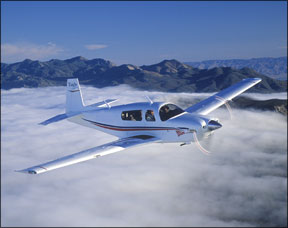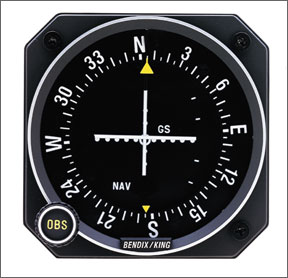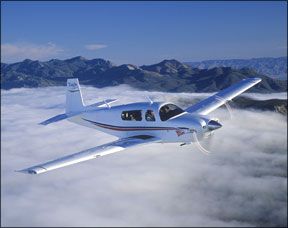When engineers developed the ILS so many years ago, they simultaneously created one of the most reliable and accurate navaids ever. The basic ILS is in use throughout the world and, with appropriate air- and ground-borne hardware, site prep, training and certification, we can use it to fly down to and land without seeing much at all out the windshield. But those engineers couldnt do everything. They couldnt, for example, eliminate the ever-narrowing of the desired course and descent path as we get closer to the runway. They also couldnt eliminate the need to descend in the first place. In the bargain, were “saddled with” a well-understood and predictable means to transition from straight-and-level flight in the terminal area to sitting upright at the airport bar, with a few moments of needle-chasing thrown in for good measure. Like so many things in life and aviation, there are ways to cheat-err, simplify-the ILS. Many pilots-especially those with a newer instrument rating-may not have grasped them yet. Why Cheat? In a perfect world with no winds and smooth air, cruising down the glideslope and keeping the localizer centered become a non-event. But Santa Claus, the Easter Bunny and the Tooth Fairy are mythical creatures-so is the smooth-air ILS, most of the time. Instead, the times when we 
Setting up a stable ILS approach from which deviations may be quickly noticed, and small corrections made to get back to centered needles, is critical to good instrument flying. In all other flight regimes, were always correcting to the most precise state of desired altitude, heading, course and airspeed. On the ILS, making those corrections in smaller and smaller increments is what makes us smooth and comfortable.
Much has been written and discussed on this topic and these ideas are not really new, just my way of dealing with the circumstances and challenges we face in instrument flying. Doing that while dealing with ATC, a new or unexpected vector, an uncharted intersection, emergencies, screaming infants (or passengers) or last minute changes in runway operations from the tower is what makes flying in IMC “interesting.” My objective is to make the ILS as “uninteresting” as I can.
1. Keep It Simple
“How do you watch all those things at once and still fly the plane?” Most of us have heard-and most of us asked-that question at some time or another. The explanation was typically along the lines of, “When we fly, we dont watch all of them all the time-just the ones we need-and we check the others periodically to be sure everything else is okay.” As we progressed from new pilot to more-experienced and eventually instrument-rated, we became ever more comfortable with the quick glance at the engine instruments, and developed a scan providing the feedback we needed to control the plane safely in IMC. Then we expanded our new-found skills to reading, understanding and applying an approach charts data while doing “all of the above.”
There is an old trick used in some logic and statistics classes where the instructor holds up a sheet with a spot on it and asks “What do you see?” to which the class typically responds “a spot.” That 99.99 percent of the sheet is white and that it is in fact a sheet goes unnoticed. This concept of noticing the deviation rather than the background can help make you a better instrument pilot. Keep it simple.
2. Easy Does It
To me, the most important key to good flying, and instrument flying in particular, is to stay ahead of the plane and be able to make small corrections to as few deviations from the norm as possible. Some of my instructors called it “just using the small muscles in your fingers, never the big ones in your arms.” I liked that tip and found it useful when I taught as well. One of the keys-just as it was during your primary training-is to exert
pressure on the controls and not make large movements.And not just the yoke/stick and rudder, either. Large movements of the power controls when on an ILS can get you in deep kimchi faster than you can say “missed approach.” While you probably need to do more than just exert pressure on your throttles, slight, incremental additions or reductions are preferable to pulling 500 rpm with a fixed-pitch prop or five inches of manifold pressure with a constant-speed. Were often taught to not do anything major or precipitous in an airplane. That admonishment goes double on the ILS.
3. Heading To Fly
The need to be well-established on the inbound course-not just approaching it with a degree or two to spare-is critical to staying on course after the FAF. Its no secret every approach plate-whether NACO or Jeppesen-has the magnetic inbound course printed on it. But thats seldom the heading we need to fly. Equally seldom will our desired heading be the same from the FAF to DH. Instead, the wind is likely to change during the 2000-or-so-feet well descend on the ILS. If were lucky, the wind is right down the localizer; if not, well need to compensate.
But this isnt rocket science. By flying in them for a few minutes, we should have a good idea of the winds above the FAF as were flying the procedure turn or getting vectored to the final approach course. And we should already have the surface winds, obtained either from the ATIS/AWOS or a friendly call on the CTAF.
Comparing the difference, well know we have to make a correction at some point after leaving the FAF; the corrections direction and magnitude also will be clear. Once inside the FAF and after the wind changes, one dot can too-quickly become a full-scale deflection; there is little or no slack.
Being aware of this need and planning for it is the difference between a well-flown ILS whose outcome is never in doubt and a nail-biter. Its also the mark of an experienced instrument pilot who can plan and stay ahead of the airplane.
4. Descent Rate
The winds also can impact our descent rate. Remember, of course, the normal glideslope is flown at a power setting and pitch attitude designed for a constant descent at a constant groundspeed. But, for example, approaching the FAF with a

288
tailwind and landing into a headwind will reduce our groundspeed somewhere on the glideslope and require us to similarly slow our descent rate.
In this scenario, well generally well want to correct by adding power, thus shallowing out the descent and reducing its rate. If the airplane is properly trimmed, it will seek a constant airspeed, the groundspeed will slow and well stay on the glideslope. How much power? It depends: Id guess a 30-knot change might be nominal in this instance. How much power does it take to accelerate 20 knots? Theres your answer.
In this scenario, my normal descent rate on a typical glideslope is about 450 fpm at my final approach groundspeed of 90 knots. So, with a four-knot gust correction added, and an initial groundspeed of about 120 knots, I add 150 fpm to the descent rate. If that quartering tail wind was a headwind, my descent rate could be about 300 to 350 fpm.
5. A Sheet To Cheat
There are many ways to maintain the “norm” from which deviations may be noted and corrected. The following are some thoughts on how I have learned to do it over the years. One helping me a great deal is “cheat sheet,” with expected headings, descent rates and timing witten on it for each approach. The result is a ready reference I can refer to when Im unsure about something. Often, the simple act of writing down all this stuff helps me organize for the approach.
Sometimes conditions create a very different picture than we expect, but they may not be abnormal or require a correction. Anticipating those conditions and what they will require in heading and descent rates or airspeed (for gusty conditions) will set up a safer, more consistent approach situation. This is where pre-flight and pre-approach planning comes into play and makes our lives easier and safer in the cockpit.
I typically fly as a single pilot with my non-pilot wife along. She keeps an eye on altitudes and the handheld GPS, but Im the one doing it all and getting us to anywhere safely and on time, no matter the weather. To do this I apply several concepts such as the obvious of having current charts and plates, calling out the checklist aloud to myself, talking aloud to myself as I approach altitudes and airspeeds, and I also use the cheat sheet.
When Im ahead of the plane, I can focus on making the small adjustments helping me keep the needles centered, the airspeed on target and be ready to safely transition when the airport environment appears. By writing down all this stuff, Im not fumbling around for the approach plate or scanning it for the data I need; its all right there.
The last item on my sheet-boldly written so I can find it safely and quickly-is the missed approach data. Its all right there: the correct heading, as well as climb and turn instructions ready to be flown as I consider flying another attempt or zooming off to the alternate. Im not fumbling for the plate while my pulse jumps another 50 beats. It saves me time and energy I can put into flying the airplane and working out Plan B with ATC.
Then, when things settle down, my decisions and my corrections are easier to make: If the required wind correction was just too much or the descent rate too high, how about the other approaches to the other runways? Maybe it is time to follow my instincts and head to the alternate. By having that information right in front of me, more things make sense faster and a safer, smarter decision is made on the next step.
Conclusion
So what does all this add up to? The number one priority in any kind of flying is safety. Keeping the plane under control and operating in a safe manner takes planning, skill and staying ahead of the plane.
Skill shows up in many ways, but most of us look at the smooth pilot as the most skilled. No sudden, violent or jerky movements and that nice, constant G force saying to our inner senses that all is well. To get this result requires small, almost unobservable corrections to a well-planned course and three-dimensional track. Achieving it is challenged by outside forces and situations. Flying IFR is a dynamic exercise; sometimes all our planning gets tossed out the window.
Knowing what to expect as we near the airport and approach is an excellent means of both setting up the right platform and feeling comfortable with the circumstances we are experiencing. It keeps us ahead of the airplane, relaxed and using those smaller muscles, and performing like the professional pilot we all know is inside us.
Bill Straw is a 4000-hour commercial instrument-rated pilot who flies a 1971 Turbo Skymaster.




